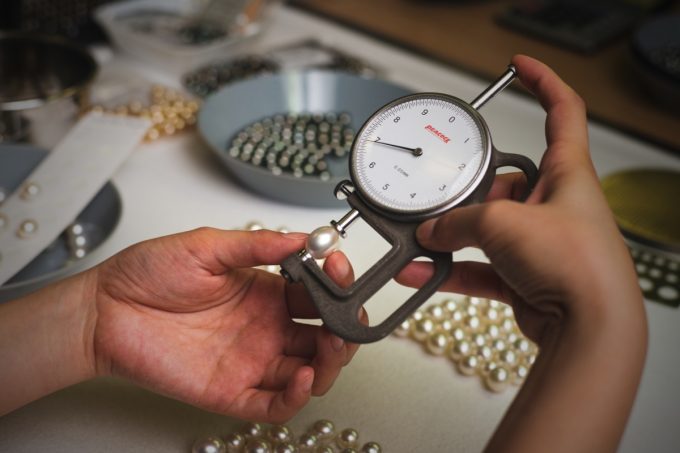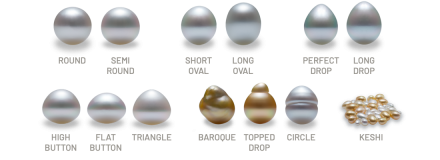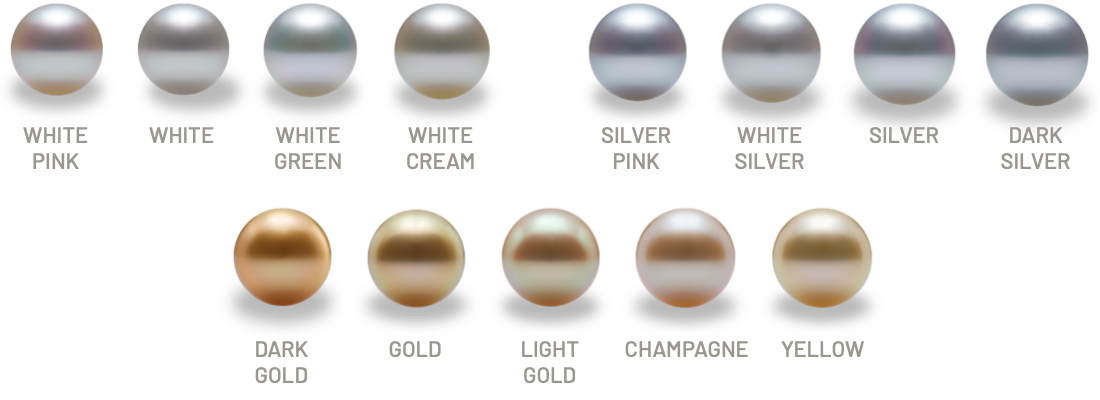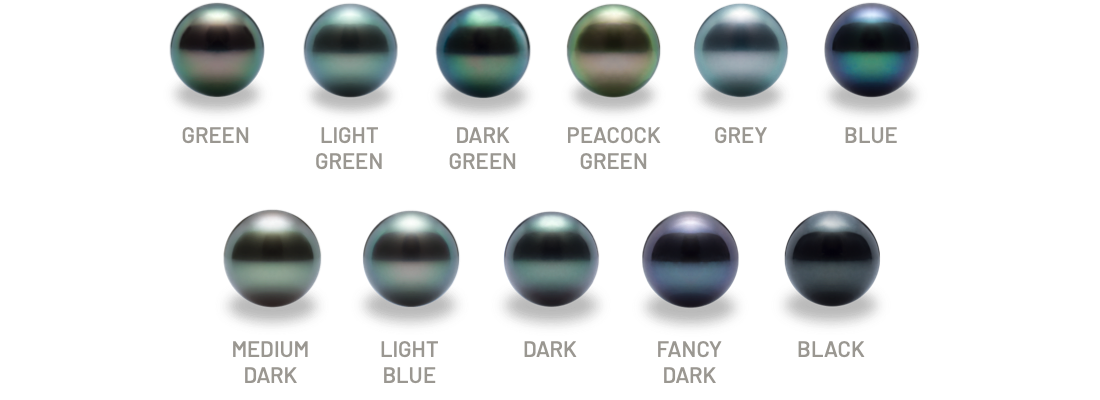Grading & Valuation
BEAUTY IN DISTINCTION
The assessment and valuation of pearls is one of the most fundamental aspects of the trade and is a skill that must be cultivated over many years of continuous practice.
Pearls have been graded in the same way for generations: manually, using the eyes. Each and every pearl in a harvest is inspected individually to determine its quality and traits, and no technology exists to replace this arduous process.

FIVE HALLMARKS OF PEARLS
Pearl harvests differ from season to season, and natural factors determine the size and quality of each harvest. Stringent grading criteria and valuation systems are vital to ensure consistency with the supply chain and to keep the price-to-quality relationship stable and transparent.
Pearls are graded and valued according to five main criteria: size, shape, luster, color and surface quality.
A seasoned grader will have to consider all five at the same time, making this a highly nuanced art.
Cultured South Sea pearls generally range from 8mm to 16mm, with larger sizes increasingly rare. Larger pearls take longer to form and are more difficult to produce and command a higher price as a result.

The demand for a certain shape determines the value of a pearl. Symmetrical shapes such as round and teardrop are rare and traditionally more desired, hence more valuable.
Common shapes include round, semi-round, oval, drop, button, baroque, circle, and keshi, and there are more variations within these categories.
Keshi are small irregular formations of nacre that form inside of the oyster without a nucleus, a by-product of the culturing process.

The luster is responsible for a pearl’s radiant glow and is its most recognized, revered, and defining feature.
Luster is revealed when light interacts with multiple layers of nacre uninterrupted and results in a luminous shine from deep within.
A pearl with high luster has both vivid depth and a remarkably reflective surface, created by the symmetrical formation of layers of nacre. Pearls with the most exceptional luster are highly desired and valued.

South Sea and Tahitian pearls manifest a spectrum of colors that reflect the hues of the oyster shell. Part of a pearl’s value can be determined by the current market popularity of its color or shade.
Australian South Sea Pearls embody white, silver, pink, and cream tones, while pearls cultivated around Indonesia, Philippines, and the Andaman Sea display a golden range with varying intensities.
Tahitian oysters produce darker shades such as green, blue, silver, aubergine, and other vivid colors. The intensity of the hues influences the value of the pearl, with stronger colors fetching higher valuations.


Pearls with a flawless surface are rare—most include varying degrees of natural imperfections. A pearl’s value is influenced by the visibility and concentration of these imperfections with cleaner pearls commanding a higher value.
Another defining factor is the tightness of a pearl’s nacre. Tight nacre formations lead to a smooth, mirror-like skin that increases a pearl’s radiance and value. Looser nacre formations produce a grainy surface, reducing its appeal.

